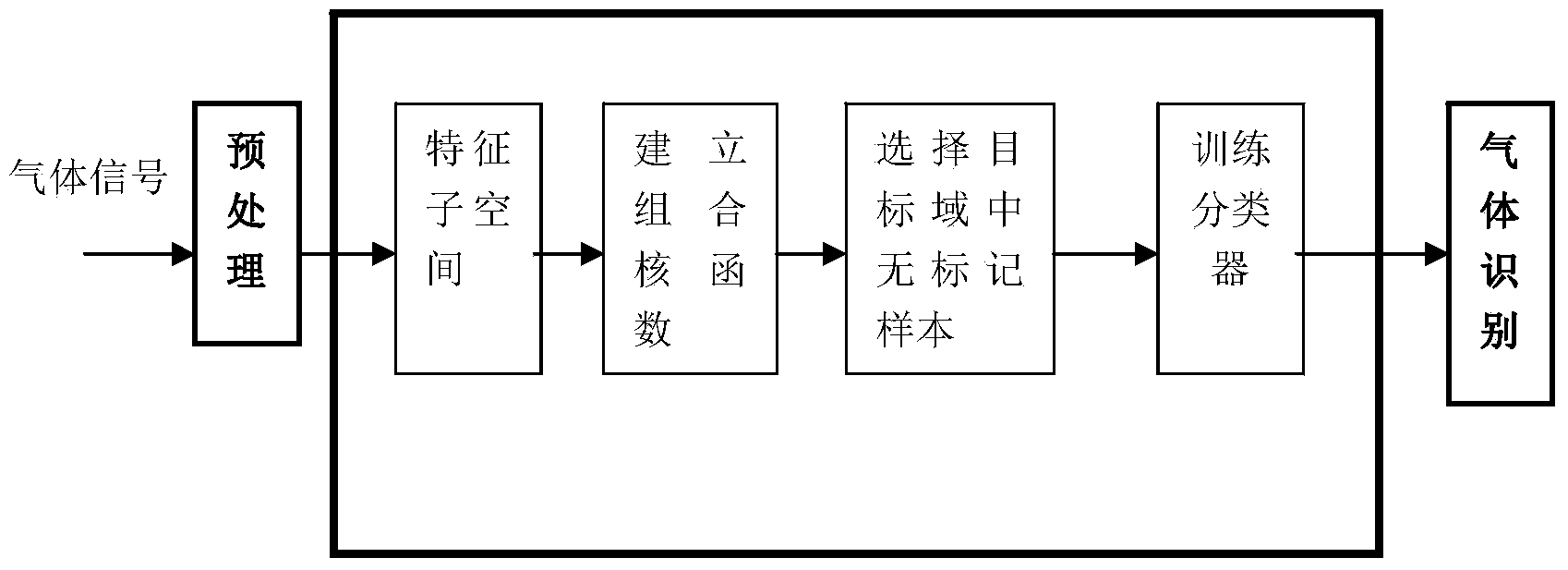Gas detection method based on self-adaption of semi-supervised domain
A gas detection and self-adaptive technology, applied in measurement devices, material analysis by electromagnetic means, instruments, etc., can solve problems such as increased system maintenance costs, low recognition algorithm recognition rate, and different response signal data.
- Summary
- Abstract
- Description
- Claims
- Application Information
AI Technical Summary
Problems solved by technology
Method used
Image
Examples
Embodiment Construction
[0093] The embodiments of the present invention will be further described below in conjunction with the drawings.
[0094] Gas detection and recognition refers to the preprocessing of gas data collected by gas sensors, feature extraction, feature dimensionality reduction and finally establishment of pattern recognition algorithms. Data preprocessing is mainly to process the collected original signals, remove noise, measurement errors and other physical and human factors to stabilize the processed data, such as differential processing, baseline operations, various filtering techniques, etc.
[0095] The gas data is high-dimensional time data after pre-processing, and the input data of the classifier must be formed through feature extraction and feature dimensionality reduction. The purpose of feature extraction and feature dimensionality reduction is to extract features that can reflect the gas to be detected from the gas data, remove irrelevant and redundant features, which is bene...
PUM
 Login to View More
Login to View More Abstract
Description
Claims
Application Information
 Login to View More
Login to View More - R&D
- Intellectual Property
- Life Sciences
- Materials
- Tech Scout
- Unparalleled Data Quality
- Higher Quality Content
- 60% Fewer Hallucinations
Browse by: Latest US Patents, China's latest patents, Technical Efficacy Thesaurus, Application Domain, Technology Topic, Popular Technical Reports.
© 2025 PatSnap. All rights reserved.Legal|Privacy policy|Modern Slavery Act Transparency Statement|Sitemap|About US| Contact US: help@patsnap.com



